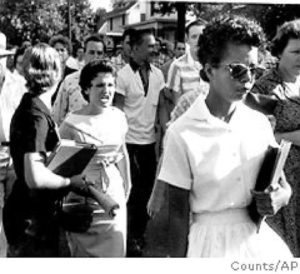
As was reported in US News, some states allow communities to break off and form their own districts, taking their tax dollars with them and siphoning off crucial financial resources from schools in low-income areas that are more diverse and where communities and children are more vulnerable. The nonprofit group EdBuild, which deals with educational funding and equity, recently released a report called Fractured: The Breakdown of America’s School Districts. The report found that 30 states have laws on the books to allow small towns to secede from larger communities. Across the nation, 71 localities have attempted such a move and 47 have succeeded since 2000.
One good example of this secession movement is taking place in Alabama, which makes it particularly easy for communities to secede. For example, a federal court has allowed the town of Gardendale, a white, middle-class section of Jefferson County, to break off from the rest of their current school district for the purposes of, as the mayor articulated, “keeping our tax dollars here with our kids, rather than sharing them with kids all over Jefferson County.” The new school district would serve a student population of 2,000 that is 22 percent nonwhite and 7 percent low income. In contrast, throughout Jefferson County, one fifth of the children are impoverished and the majority are nonwhite.
Another example is Shelby County, Tenn., in the Memphis area. After six communities seceded from Shelby County, its budget was cut by one-fifth, seven schools were closed and hundreds of teachers were laid off. Tennessee, as US News noted, has one of the most relaxed secession policies, requiring only 1,500 students and the vote of a majority of people in the municipality.
When well-to-do white school districts break off from their larger, poorer and darker areas, they take the resources and the tax base with them. The report noted that 21 of the 30 states allowing secession require action by voters, while 21 require approval by a state authority. Three states require a constitutional amendment and only one state requires the state legislature to take action. Only six of these states must consider racial and socioeconomic factors, and nine must consider the impact on funding.
The concept of school district secession harkens back to the days of the segregation academies or Christian academies, private schools founded by whites after the Brown desegregation decision to avoid having their children attend school with Black children. Over the years, as The Daily Beast found, these white academies had to move beyond the whites-only rationalization for their existence, adding the rationale that they needed to combat “secular humanism” and liberalism, even as the importance of race remained. These private white schools remain, their student bodies remaining overwhelmingly white and wealthy, with few or no Black students.
Educational segregation is on the increase in America. As Frontline reported, data from the UCLA Civil Rights Project showed that in the South, the percentage of Black students in majority white schools went from zero to a high of 43.5 percent in 1988. By 2011, the number had reverted to 1968 levels at 23.2 percent. This is important because the UCLA figures demonstrate a high correlation between segregation and poverty. Over half of the children in the poorest schools are Black and Latino, translating into lower-quality teachers, supplies and facilities. “In many respects, the schools serving white and Asian students and those serving Black and Latino students represent two different worlds,” the UCLA researchers said.
“Segregation is typically segregation by both race and poverty. Black and Latino students tend to be in schools with a substantial majority of poor children, but white and Asian students are typically in middle-class schools,” the UCLA report noted. “Segregation is by far the most serious in the central cities of the largest metropolitan areas, but it is also severe in central cities of all sizes and suburbs of the largest metro areas, which are now half nonwhite. Latinos are significantly more segregated than Blacks in suburban America.”
The nation’s system of education does not provide opportunity in an equitable manner. The problem of economic disparities among school districts arises when one considers the manner in which schools are funded in America. As The Atlantic reported, education is financed based on the money available within a given district, which may or may not correlate with the amount of resources necessary to effectively teach children. School funding is locally based, and the federal government supplies 8-9 percent of school budgets through programs such as school lunch and Head Start, with state and local government making up the balance, with the particular formula depending on each state. Throughout the country, poor districts spend 15.6-percent less than districts of greater means, according to the U.S. Department of Education. Greater school expenditures lead to students completing more education, higher earnings and lower poverty as adults, as the National Bureau of Economic research found.
UCLA makes a number of recommendations. For example, they suggest that civil rights organizations develop strategies and legal tactics to reverse the trend of educational segregation. The federal government can set the tone in setting national policy and providing for equity in the schools, and states should aggressively recruit Black and Latino teachers. The report also urges that HUD do more to address housing re-segregation, including a joint project with the Justice and Education Departments to support integration in communities and schools in gentrifying cities and racially shifting suburbs.
“We recommend substantial expansion of magnet school funding, strong civil rights policies for charter schools, serious incentives for regional collaboration and teacher training for diverse and racially changing schools,” the report added.


